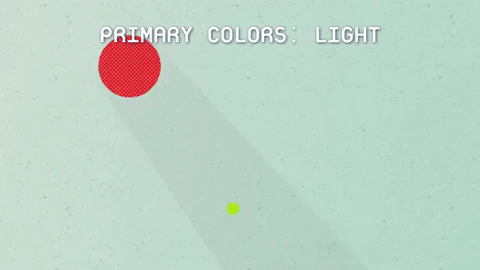Great Scott, It’s Back To The Future Day – Oct. 21, 2015
Great Scott, it’s Back to the Future Day – Oct. 21, 2015
What would a time traveler from 1985 discover about NASA today?
It’s Back to the Future Day, the date in the second film that Marty and Doc traveled to in the future. When they arrived in 2015, it looked much different than today’s reality. Although we may not have self-drying jackets or flying cars, we do have some amazing spacecraft and technologies that were not around back when the film was made.

For example, in 1985 we did not have the capability to capture an image like this of our Earth. This full-Earth view captured Monday (10/19/15) by our camera on the Deep Space Climate Observatory, or DSCOVER, was not previously possible. The DSCOVR mission captures a daily sequence of images that show the Earth as it rotates, revealing the whole globe over the course of a day. These images will allow scientists to study daily variations over the entire globe in such features as vegetation, ozone, aerosols and cloud height and reflectivity.
So, we might not be cruising down the street on hover boards, but the movies didn’t get it all wrong in terms of how advanced we’d be in 2015.
When you were a kid, what technologies did you dream we’d have in the future that we may or may not have today? Here’s what two astronauts said:
NASA is much different than it was in 1985. Could we have dreamed these amazing accomplishments that have changed our world and understanding of the universe?
1. “There will be an orbiting laboratory where astronauts from around the world will live and work together.”

When Back to the Future II was set, the International Space Station didn’t exist yet. The first piece of the space station was launched in 1998, and the first crew arrived in 2000. Since November 2000, the station has been continuously occupied by humans.
2. "We will find planets orbiting in the habitable zone of a star, and possibly suited for life."

The first exoplanet, or planet orbiting around a star, was found in 1995. Since then, we’ve discovered around a dozen habitable zone planets in the Earth-size range. While we aren’t able to zoom in to these planets that are light-years away, we’re still closer to finding another Earth-like planet in 2015 than we were in 1985.
3. “Mars will become more populated.”

No, not by humans...yet. But, since the release of Back to the Future II, Mars has become a bit more populated with rovers and orbiters. These scientific spacecraft have played an important role in learning about the Red Planet. We currently have six missions at Mars. With the most recent news of liquid water on the surface of Mars, we can look forward to future missions returning even more data and images. The historical log of all Mars missions, both domestic and international can be found HERE.
4. “We will launch a telescope into orbit that’s capable of looking at locations more than 13.4 billion light years from Earth.”

When Back to the Future II was released, our Hubble Space Telescope had not yet launched into orbit -- something that wouldn’t happen until April 1990. Since then, Hubble has made more than 1.2 million observations, and has traveled more than 3 billion miles along a circular low Earth orbit. For updates on Hubble’s findings, check HERE.
For more information about the technology that we’re developing at NASA, visit: http://www.nasa.gov/topics/technology
Make sure to follow us on Tumblr for your regular dose of space: http://nasa.tumblr.com
More Posts from Nasa and Others
Asteroid Terms: Explained
There are interesting asteroid characters in our solar system, including an asteroid that has its own moon and even one that is shaped like a dog bone! Our OSIRIS-REx mission launches at 7:05 p.m. EDT today and will travel to asteroid Bennu.

Scientists chose Bennu as the target of the OSIRIS-REx mission because of its composition, size and proximity to Earth. Bennu is a rare B-type asteroid (primitive and carbon-rich), which is expected to have organic compounds and water-bearing minerals like clays.
Our OSIRIS-REx mission will travel to Bennu and bring a small sample back to Earth for study.

When talking about asteroids, there are some terms scientists use that might not be in your typical vocabulary…but we’ll help with that!
Here are a few terms you should know:
Orbital Eccentricity: This number describes the shape of an asteroid’s orbit by how elliptical it is. For asteroids in orbit around the sun, eccentricity is a number between 0 and 1, with 0 being a perfectly circular orbit and 0.99 being a highly elliptical orbit.
Inclination: The angle, in degrees, of how tilted an asteroid’s orbit is compared to another plane of reference, usually the plane of the Earth’s orbit around the sun.
Orbital Period: The number of days it takes for an asteroid to revolve once around the sun. For example, the Earth’s orbital period is 365 days.
Perihelion Distance: The distance between an asteroid and the sun when the asteroid is closest to the sun.
Aphelion Distance: The distance between the asteroid and the sun when the asteroid is farthest away from the sun.
Astronomical unit: A distance unit commonly used to describe orbits of objects around the sun. The distance from the Earth to the sun is one astronomical unit, or 1 AU, equivalent to about 93 million miles or 150 million kilometers.
Diameter: A measure of the size of an asteroid. It is the length of a line from a point on the surface, through the center of the asteroid, extending out to the opposite surface. Irregularly shaped asteroids may have different diameters depending on which direction they are measured.
Rotation Period: The time it takes for an asteroid to complete one revolution around its axis of rotation. For example, the rotation period of the Earth is approximately 24 hours, or 1 day.
Spectral Type: The classification of an asteroid, based on a measurement of the light reflected by the asteroid.

Watch live launch coverage of OSIRIS-REx to asteroid Bennu starting at 5:30 p.m, on NASA TV: http://www.nasa.gov/nasatv
Make sure to follow us on Tumblr for your regular dose of space: http://nasa.tumblr.com
Studying Sediments in Space
An International Space Station investigation called BCAT-CS studies dynamic forces between sediment particles that cluster together.

For the study, scientists sent mixtures of quartz and clay particles to the space station and subjected them to various levels of simulated gravity.

Conducting the experiment in microgravity makes it possible to separate out different forces that act on sediments and look at the function of each.

Sediment systems of quartz and clay occur many places on Earth, including rivers, lakes, and oceans, and affect many activities, from deep-sea hydrocarbon drilling to carbon sequestration.

Understanding how sediments behave has a range of applications on Earth, including predicting and mitigating erosion, improving water treatment, modeling the carbon cycle, sequestering contaminants and more accurately finding deep sea oil reservoirs.

It also may provide insight for future studies of the geology of new and unexplored planets.

Follow @ISS_RESEARCH to learn more.
Make sure to follow us on Tumblr for your regular dose of space: http://nasa.tumblr.com.
NASA’s 60th Anniversary: The Leading Edge of Flight
Aeronautics is our tradition. For 60 years, we have advanced aeronautics, developed new technologies and researched aerodynamics. Our advancements have transformed the way you fly. We will continue to revolutionize flight. Since we opened for business on Oct. 1, 1958, our history tells a story of exploration, innovation and discoveries. The next 60 years, that story continues. Learn more: https://www.nasa.gov/60
Make sure to follow us on Tumblr for your regular dose of space: http://nasa.tumblr.com.
Milky Blue Water Near Prince of Wales Island
Phytoplankton are more than just nature’s watercolors: They’re tiny ocean organisms that play a key role in Earth’s climate by removing heat-trapping carbon dioxide from the atmosphere through photosynthesis. These tiny organisms live in the oceans, absorbing carbon dioxide and releasing oxygen, like plants on land. Earth’s oceans absorb about half of the carbon dioxide in the atmosphere, which feeds phytoplankton.
This year, phytoplankton blooms popped up in the panhandle region of Alaska and along the coast of British Columbia slightly later in the year than the main blooms that tend to occur in May.

This image was acquired on July 21, 2018, by the Moderate Resolution Imaging Spectroradiometer (MODIS) on our Terra satellite and shows milky blue waters near Prince of Wales Island. The discoloration is thought to be caused by a bloom of non-toxic phytoplankton known as coccolithophores, specifically Emiliania huxleyi, which like warm, stratified, and low nutrient conditions.
This week, our Export Processes in the Ocean from Remote Sensing (EXPORTS) team is shipping out into the open ocean to study these important organisms, sailing 200 miles west from Seattle into the northeastern Pacific Ocean.
Read more about the image and learn more about the EXPORTS campaign here: https://www.nasa.gov/feature/goddard/2018/expedition-probes-ocean-s-smallest-organisms-for-climate-answers
Make sure to follow us on Tumblr for your regular dose of space: http://nasa.tumblr.com.

Soaring through the skies! This view looks from the window of our F-18 support aircraft during a 2016 Orbital ATK air-launch of its Pegasus rocket.
The CYGNSS mission, led by the University of Michigan, will use eight micro-satellite observatories to measure wind speeds over Earth’s oceans, increasing the ability of scientists to understand and predict hurricanes.
CYGNSS launched at 8:37 a.m. EST on Thursday, Dec. 15, 2016 from our Kennedy Space Center in Florida. CYGNSS launched aboard an Orbital ATK Pegasus XL rocket, deployed from Orbital’s “Stargazer” L-1011 carrier aircraft.
Pegasus is a winged, three-stage solid propellant rocket that can launch a satellite into low Earth orbit. How does it work? Great question!
After takeoff, the aircraft (which looks like a commercial airplane..but with some special quirks) flies to about 39,000 feet over the ocean and releases the rocket.
Make sure to follow us on Tumblr for your regular dose of space: http://nasa.tumblr.com
4 people are living in an isolated habitat for 30 days. Why? Science!
This 30 day mission will help our researchers learn how isolation and close quarters affect individual and group behavior. This study at our Johnson Space Center prepares us for long duration space missions, like a trip to an asteroid or even to Mars.

The Human Research Exploration Analog (HERA) that the crew members will be living in is one compact, science-making house. But unlike in a normal house, these inhabitants won't go outside for 30 days. Their communication with the rest of planet Earth will also be very limited, and they won’t have any access to internet. So no checking social media kids!
The only people they will talk with regularly are mission control and each other.

The crew member selection process is based on a number of criteria, including the same criteria for astronaut selection.
What will they be doing?
Because this mission simulates a 715-day journey to a Near-Earth asteroid, the four crew members will complete activities similar to what would happen during an outbound transit, on location at the asteroid, and the return transit phases of a mission (just in a bit of an accelerated timeframe). This simulation means that even when communicating with mission control, there will be a delay on all communications ranging from 1 to 10 minutes each way. The crew will also perform virtual spacewalk missions once they reach their destination, where they will inspect the asteroid and collect samples from it.
A few other details:
The crew follows a timeline that is similar to one used for the ISS crew.
They work 16 hours a day, Monday through Friday. This includes time for daily planning, conferences, meals and exercises.
They will be growing and taking care of plants and brine shrimp, which they will analyze and document.
But beware! While we do all we can to avoid crises during missions, crews need to be able to respond in the event of an emergency. The HERA crew will conduct a couple of emergency scenario simulations, including one that will require them to maneuver through a debris field during the Earth-bound phase of the mission.

Throughout the mission, researchers will gather information about cohabitation, teamwork, team cohesion, mood, performance and overall well-being. The crew members will be tracked by numerous devices that each capture different types of data.

Past HERA crew members wore a sensor that recorded heart rate, distance, motion and sound intensity. When crew members were working together, the sensor would also record their proximity as well, helping investigators learn about team cohesion.
Researchers also learned about how crew members react to stress by recording and analyzing verbal interactions and by analyzing “markers” in blood and saliva samples.

In total, this mission will include 19 individual investigations across key human research elements. From psychological to physiological experiments, the crew members will help prepare us for future missions.
UPDATE:
Mission success! After a simulated mission to an asteroid, the crew “splashed down” around 10:30 p.m. EST on Wednesday, Feb. 24 and exited the habitat for the first time in 30 days.
Want a full, 360 degree look at HERA? Check out and explore the inside of the habitat.
Make sure to follow us on Tumblr for your regular dose of space: http://nasa.tumblr.com
NASA Astronaut Scott Kelly shared this incredible video tonight, August 11, showing "our galactic home" with the stars of the Milky Way. Kelly is living and working off the Earth, for the Earth aboard the station for a yearlong mission. Traveling the world more than 220 miles above the Earth, and at 17,500 mph, he circumnavigates the globe more than a dozen times a day conducting research about how the body adapts and changes to living in space for a long duration.
Video credit: NASA
Build it. Test it. Then, Fly it.
Hundreds of pieces of rockets, rocket engines, boosters, space capsules, launch structures and more have been built, tested and prepared to take us on our Journey to Mars. Across the country, America’s space program is hard at work to launch the Orion space capsule on its first uncrewed flight atop the powerful Space Launch System in 2018.

But enough of the artist concepts, let’s take a look at the real components being made across the country to prepare for this milestone:
Orion Spacecraft

From testing individual bracket strength to space flight tests, the Orion team is testing every component and subsystem of the spacecraft to ensure crew safety, operational reliability and backup systems are built into the spacecraft from the ground up. To date, hundreds of tests have been conducted across the program to verify and validate that Orion’s design, manufacturing and systems integration meet the rigorous requirements for safe human space exploration.

Orion engineers have subjected the spacecraft to deafening sound blasts, Earthquake-like vibrations and hurricane-force winds in preparation for Orion’s next flight. Large structures such as Orion’s crew and service modules were tested at Lockheed Martin’s Waterton Facility in Littleton, Colorado, and our Glenn Research Center’s Plum Brook Station in Sandusky, Ohio. Motor and engine tests have been conducted at Aerojet Rocketdyne’s facility in Sacramento, California, and Orbital ATK’s facilities in Promontory, Utah, and Elkton, Maryland.

Water impact testing of Orion’s landing capabilities were conducted at our Langley Research Center in Hampton, Virginia, and the capsule’s massive parachute system has been tested in various landing scenarios at the U.S. Army’s Yuma Proving Ground in Arizona. Final assembly, integration and pre-flight testing will take place at our Kennedy Space Center in Florida.
Space Launch System

Towering more than 320 feet, the Space Launch System will be the world’s most powerful rocket. Consisting of a core stage and two boosters, RS-25 engines, and the software to power it all, the initial configuration will provide 15 percent more thrust at launch than the Saturn V rocket and carry more than three times the mass of the Space Shuttle. When complete, we’ll be ready to fire up the largest and most powerful rocket ever built on it’s inaugural launch.

At our Michoud Assembly Facility in New Orleans, a talented crew of humans with the latest in machinery is building SLS’s core stage. The core stage is the structural backbone of SLS that stores cryogenic liquid hydrogen and liquid oxygen that feed the vehicle’s four RS-25 engines.

For two monumental minutes in June, the SLS solid rocket boosters fired up in an amazing display of power as engineers verified their designs in the last full-scale test before SLS’s first flight. The smoke and fire may last only two minutes, but engineers at NASA’s Marshall Space Flight Center in Huntsville, Alabama, and Orbital ATK in Promontory, Utah, prepared weeks — even months — in advance for that test.
Launch Site

At our Kennedy Space Center in Florida, teams are hard at work transforming the historic Vehicle Assembly Building for the launches of tomorrow. Like a stairway to the heavens, these upgrades include the building and installation of platforms to access the new Space Launch System rocket.

Before SLS roars into deep space from Launch Pad 39B, our Ground Systems program continues making significant upgrades and modifications to the historic launch pad to accommodate the new rocket’s shape and size.

To make room for this new generation of rockets, workers took down the gantry that stood in support of the Space Shuttle program for 30 years and replaced it with, well, not much really. But that was the idea. Whenever SLS heads out to the pad in the future, it's going to bring its support structure with it. With that in mind, Pad 39B will provide all the fluids, electrical, and communications services to the launch platform.

All of this work is essential to get SLS flight ready before it’s maiden voyage and is an important step on our Journey to Mars.
Next Steps
The work happening across the country is preparing us for the first flight of SLS and Orion in 2018. That first, uncrewed test flight is critical to paving the way for future flights that will carry astronauts to deep space, including on a journey to Mars.

Ultimately, the SLS maiden flight will help us prepare for future human missions. During this flight, currently designated Exploration Mission-1, the spacecraft will travel thousands of miles beyond the moon over the course of about a three-week mission.

It will launch on the most powerful rocket in the world and fly farther than any spacecraft built for humans has ever flown. Orion will stay in space longer than any ship for astronauts has done without docking to a space station and return home faster and hotter than ever before.
Make sure to follow us on Tumblr for your regular dose of space: http://nasa.tumblr.com
How Do Space Telescopes Break Down Light?
Space telescopes like Hubble and our upcoming James Webb Space Telescope use light not only to create images, but can also break light down into individual colors (or wavelengths). Studying light this way can give us a lot of detail about the object that emitted that light. For example, studying the components of the light from exoplanets can tell us about its atmosphere’s color, chemical makeup, and temperature. How does this work?
Remember the primary colors you learned about in elementary school?
Those colors are known as the pigment or subtractive colors. Every other color is some combination of the primary colors: red, yellow, and blue.

Light also has its own primary colors, and they work in a similar way. These colors are known as additive or light colors.

TVs make use of light’s colors to create the pictures we see. Each pixel of a TV screen contains some amount of red, green and blue light. The amount of each light determines the overall color of the pixel. So, each color on the TV comes from a combination of the primary colors of light: red, green and blue.

Space telescope images of celestial objects are also a combination of the colors of light.

Every pixel that is collected can be broken down into its base colors. To learn even more, astronomers break the red, green and blue light down into even smaller sections called wavelengths.
This breakdown is called a spectrum.

With the right technology, every pixel of light can also be measured as a spectrum.

Images show us the big picture, while a spectrum reveals finer details. Astronomers use spectra to learn things like what molecules are in planet atmospheres and distant galaxies.

An Integral Field Unit, or IFU, is a special tool on the James Webb Space Telescope that captures images and spectra at the same time.

The IFU creates a unique spectrum for each pixel of the image the telescope is capturing, providing scientists with an enormous amount of valuable, detailed data. So, with an IFU we can get an image, many spectra and a better understanding of our universe.
Watch the full video where this method of learning about planetary atmospheres is explained:
The James Webb Space Telescope is our upcoming infrared space observatory, which will launch in 2021. It will spy the first galaxies that formed in the universe and shed light on how galaxies evolve, how stars and planetary systems are born and tell us about potentially habitable planets around other stars.
To learn more about NASA’s James Webb Space Telescope, visit the website, or follow the mission on Facebook, Twitter and Instagram.
Text and graphics credit: Space Telescope Science Institute
Make sure to follow us on Tumblr for your regular dose of space: http://nasa.tumblr.com.
Hi Jeanette, I want ask you wich was your first employment? Have a good day
I was 14 years old, and I worked at United Way doing data entry. They were going from the card files to all digital, and I could only work in the summer.
-
 curiousallure liked this · 6 years ago
curiousallure liked this · 6 years ago -
 whosthought liked this · 7 years ago
whosthought liked this · 7 years ago -
 salmotribe-blog liked this · 7 years ago
salmotribe-blog liked this · 7 years ago -
 glitter-cartel liked this · 9 years ago
glitter-cartel liked this · 9 years ago -
 bielote liked this · 9 years ago
bielote liked this · 9 years ago -
 deppitybob liked this · 9 years ago
deppitybob liked this · 9 years ago -
 plantiestgay liked this · 9 years ago
plantiestgay liked this · 9 years ago -
 omegaskiess liked this · 9 years ago
omegaskiess liked this · 9 years ago -
 astrovni-blog reblogged this · 9 years ago
astrovni-blog reblogged this · 9 years ago -
 sinaisinais reblogged this · 9 years ago
sinaisinais reblogged this · 9 years ago -
 umabeca liked this · 9 years ago
umabeca liked this · 9 years ago -
 mediumsizetex liked this · 9 years ago
mediumsizetex liked this · 9 years ago -
 doctor-autobot liked this · 9 years ago
doctor-autobot liked this · 9 years ago -
 goldpilot22 reblogged this · 9 years ago
goldpilot22 reblogged this · 9 years ago -
 michiganmymichigan reblogged this · 9 years ago
michiganmymichigan reblogged this · 9 years ago -
 tears4gears reblogged this · 9 years ago
tears4gears reblogged this · 9 years ago -
 ravenandhislenore reblogged this · 9 years ago
ravenandhislenore reblogged this · 9 years ago -
 reila97 liked this · 9 years ago
reila97 liked this · 9 years ago -
 pucksandpuns liked this · 9 years ago
pucksandpuns liked this · 9 years ago -
 scientific-kind-of-gal reblogged this · 9 years ago
scientific-kind-of-gal reblogged this · 9 years ago -
 myouth liked this · 9 years ago
myouth liked this · 9 years ago -
 geeky-little-nurse reblogged this · 9 years ago
geeky-little-nurse reblogged this · 9 years ago -
 buticlaimedtheusername liked this · 9 years ago
buticlaimedtheusername liked this · 9 years ago -
 petra293417-blog liked this · 9 years ago
petra293417-blog liked this · 9 years ago -
 mikeandrews365 liked this · 9 years ago
mikeandrews365 liked this · 9 years ago -
 mind-palace-221b liked this · 9 years ago
mind-palace-221b liked this · 9 years ago -
 rjbailey reblogged this · 9 years ago
rjbailey reblogged this · 9 years ago -
 kangbaekmin liked this · 9 years ago
kangbaekmin liked this · 9 years ago -
 letsgoinsanekatsiki liked this · 9 years ago
letsgoinsanekatsiki liked this · 9 years ago -
 echowand reblogged this · 9 years ago
echowand reblogged this · 9 years ago -
 rjbailey liked this · 9 years ago
rjbailey liked this · 9 years ago -
 his-lilgirl reblogged this · 9 years ago
his-lilgirl reblogged this · 9 years ago -
 his-lilgirl liked this · 9 years ago
his-lilgirl liked this · 9 years ago -
 jaaylasworld liked this · 9 years ago
jaaylasworld liked this · 9 years ago
Explore the universe and discover our home planet with the official NASA Tumblr account
1K posts